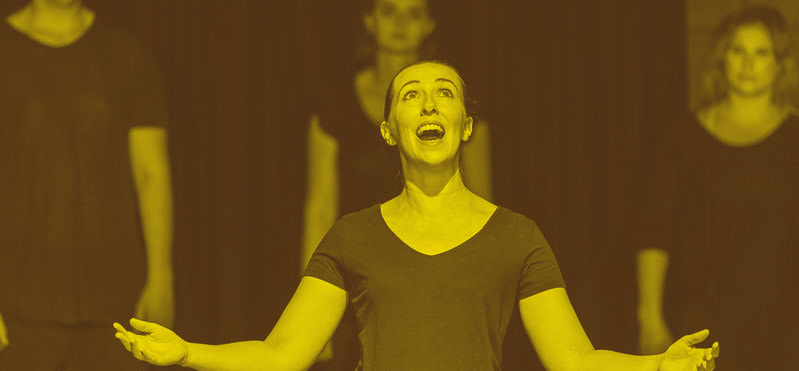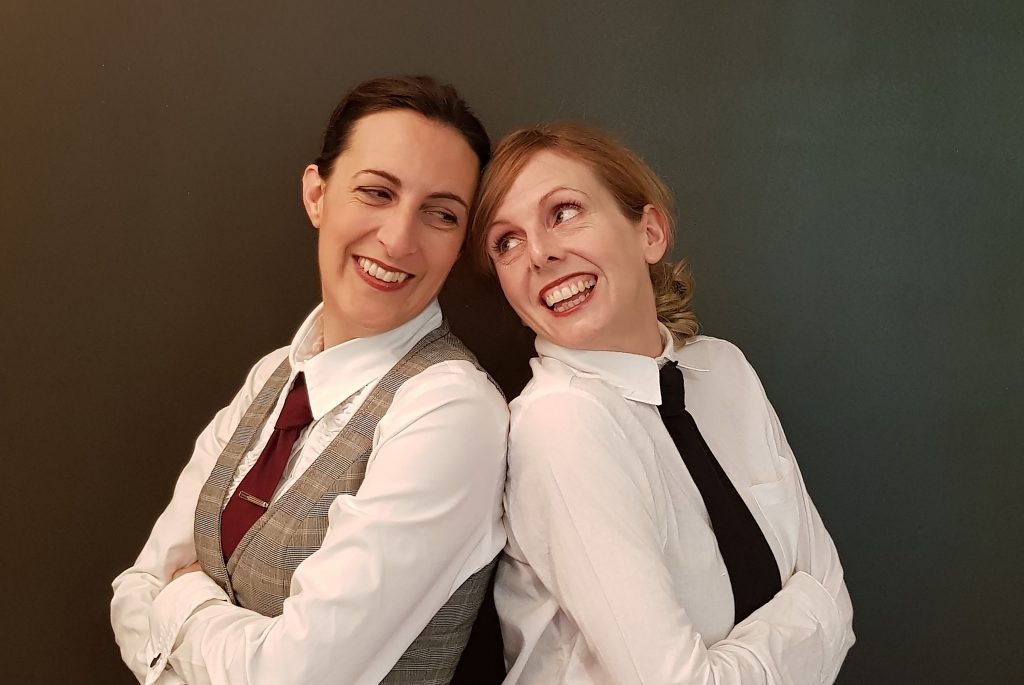
‘Macbeth in the Dark’ // Queensland Shakespeare Ensemble
‘Macbeth in the Dark’ was eerie.
‘Embrace the Dark’ was the recommended guide to listening to Queensland Shakespeare Ensemble’s ‘Macbeth in the Dark’; a radio play version of Shakespeare’s iconic play, ‘Macbeth’. While in isolation, members of the Queensland Shakespeare Ensemble took advantage of their endless creative spirit to create a production for everyone to enjoy from the comfort of their own sofas.
Written by William Shakespeare in the early 1600s, ‘Macbeth’ was inspired by the Holinshed’s Chronicles; a comprehensive description of British history, which includes a historical account of the rule of Macbeth, King of Scotland. This story follows the Scottish general Macbeth who was prophesied by three witches to become the King of Scotland. Alongside his wife, Lady Macbeth, their overzealous ambition forces them down a road of murder, tyranny, and betrayal.
‘Macbeth’ has been performed all over the world and inspired various adaptations such as the Japanese film ‘Kumunosu-jo’ – translated to ‘Throne of Blood’ – alongside countless others. The play is also a part of many English programs in high schools and has solidified itself as one of Shakespeare’s most auspicious and easily understood plays as it imparts an important message.
Directing an audio-only production of a Shakespearean play like ‘Macbeth in the Dark’ is a feat of impeccable talent, skill, and communication and Kate Wilson within Queensland Shakespeare Ensemble’s Production was more than up for the challenge Wilson explains her directorial process within the program and her coordination of each component via online video meetings. Wilson’s ability to adapt to a solely online production and be understanding and accepting of the current situation and its limitations – such as not having the ‘togetherness of live performance’ as she writes in the program – strengthened the creative output of the cast whilst rehearsing together and recording their lines individually. Her choices regarding the sound design, editing, and music were immersive and suited the tone of the play. Production manager, Kylii Davies, must also be commended for her hard work and enthusiasm in pulling together a production purely in the online space.
Dom Guilfoyle’s sound design was incredible. One of the most pertinent aspects was the soundscape design and flawless execution. Some of the sounds included battle noises like clashing swords and yelling, rain and thunder, wind, bubbling cauldrons, tolling bells, and fire. Animal sounds were also present such as the whinnying of horses and the clip-clop of their movement and crows cawing. These sounds were balanced perfectly with the dialogue and increased/decreased in volume appropriately. A further element of the sound design was the inclusion of footsteps, particularly when another character enters or exits a scene, knocking on doors, doors being opened and closed, and the rustling of paper. These sounds would be heard in a live production and incorporating them in this radio play gave scenic depth.
Another aspect of the sound design was the manipulation of the witches voices to sound somewhat demonic and frenzied. This effect contributed to the supernatural themes of the play and was therefore more effective than the stereotypical nasal speech quality of the witches. Additional voice effects were similarly used for the visions Macbeth experiences when confronting the witches
Complementing the soundscape, original music was composed by Rob Pensalfini and Liliana Macarone, and performed by themselves and Leah Fitzgerald-Quinn. The music was imperative to introducing scenes such as those referenced in the script as ‘hautboy’ – known nowadays as the oboe – and ‘flourishes’ – a fanfare of trumpets – as well as the medieval/renaissance style music with recorders and strings prior to banquet scenes. Simple string music was also inserted in the gaps between scenes and acts.
The production was fronted by Pensalfini as Macbeth and Rebecca Murphy as Lady Macbeth. Their performances were strong and expressive with each word given careful consideration. Pensalfini’s Macbeth was multifaceted, with personality traits of arrogance, naïveté, carelessness, aggression, and guilt so clearly heard from the timbre and volume of his voice. Murphy played a ruthless and cunning Lady Macbeth from the outset that was equally entrancing yet disturbing. The couple’s reactions, Lady Macbeth’s growing frustration and their growing mania and guilt throughout the play were palpable to the audience.
The remaining eight cast members – including Tom Coyle, Sarah Doyle, Leah Fitzgerald-Quinn, Matt Gaffney, Ellen Hardisty, Liliana Macarone, John Siggers, and Angus Thorburn – acted their way through the dozens of remaining characters of the play. They all portrayed their respective roles in distinct ways, however, and as to be completely expected in an audio-only production, it was at times difficult to keep track of which character was speaking. Nonetheless, the cast did a wonderful job and added substantial richness to the story including background chatter and cheering in many scenes, which contributed to immersing the listeners.
The performers and crew of the Queensland Shakespeare Ensemble successfully adapted to the new online life by producing a high quality radio play. Those involved exuded passion and skill throughout the production and alongside the theme of ‘in the dark’, made for a highly enjoyable and fresh version of ‘Macbeth’.
‘Macbeth in the Dark’ is available until the Tuesday, 6 November 2020 via Queensland Shakespeare Ensemble’s Website. For more information about the show visit Queensland Shakespeare Ensemble – ‘Macbeth in the Dark’.






